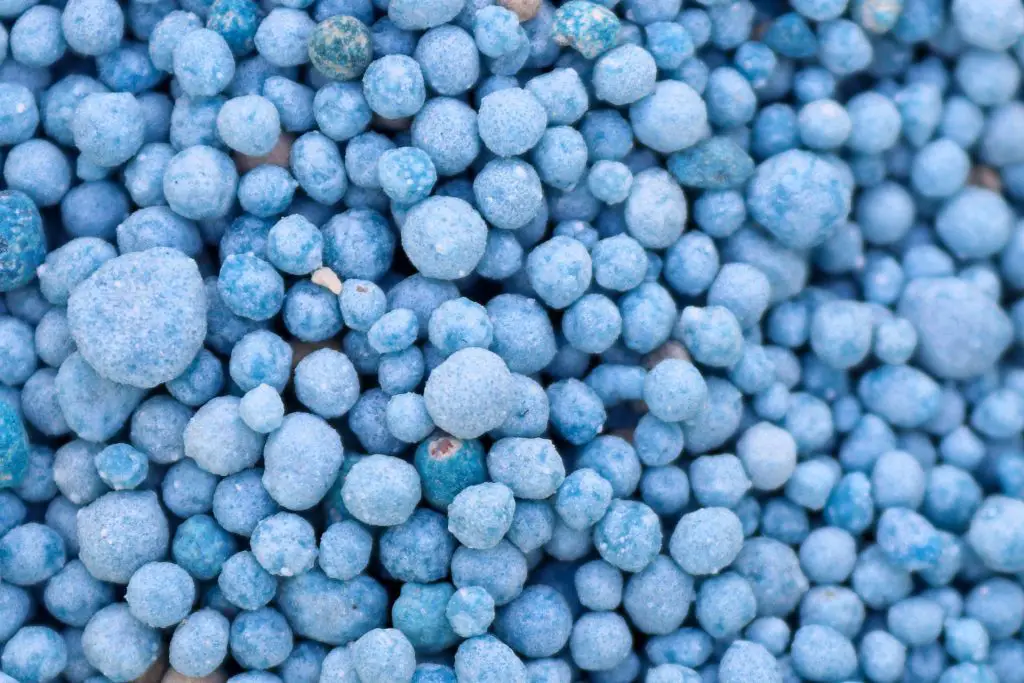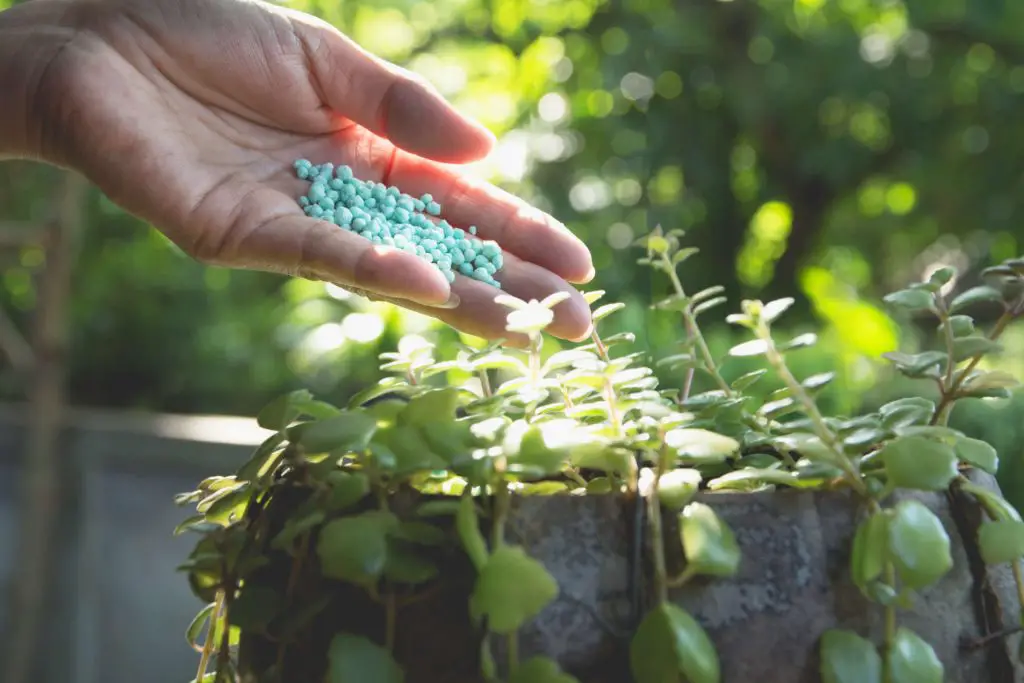How Long Does It Take Granular Fertilizer to Work
- Factors affecting granular fertilizer speed include plant type, soil, weather, and fertilizer composition.
- Average time for fertilizer to take effect varies with type, from fast-acting to slow-release.
- Determine fertilizer effectiveness by monitoring plant growth, soil nutrient levels, and plant health.
- Proper application, adequate watering, and regular soil testing ensure the effective use of granular fertilizer.
Granular fertilizers are a popular and effective way to provide essential nutrients to your plants, however, it’s important to understand how long it takes for the fertilizer to work and what factors may affect its effectiveness.
Below, we’ll take a closer look at the speed of granular fertilizer and what you can do to ensure its effectiveness. We’ll cover the average time for granular fertilizer to take effect, how to determine if the fertilizer is working, and provide tips for effective use. Whether you’re a seasoned gardener or just starting out, this article will provide valuable information to help you achieve healthy and vibrant plants.
Factors affecting the speed of granular fertilizer

The speed at which granular fertilizer takes effect depends on several factors. Understanding these factors will help you determine the most effective fertilizer for your plants and the appropriate application method and timing. The following are some of the key factors that affect the speed of granular fertilizer:
Type of Plant – How Long Does It Take Granular Fertilizer to Work
The type of plant you are growing will impact the speed of granular fertilizer. Some plants are more sensitive to fertilizer than others, and their roots may absorb the nutrients faster or slower, depending on the species. For example, vegetables absorb fertilizer quickly, while trees and shrubs may take longer to see the effects.
Soil Type and Condition
The type of soil you have and its condition will also impact the speed of granular fertilizer. Sandy soil, for example, has a faster draining rate and will not hold onto nutrients like heavier soils, such as clay. On the other hand, clay soil can retain too much water, which can lead to fertilizer runoff, making it less effective. The pH levels of your soil can also impact the speed of fertilizer uptake, as some plants require specific pH levels to absorb nutrients effectively.
Weather Conditions
The weather conditions at the application time can also affect the granular fertilizer’s speed. For example, if it’s particularly hot, the fertilizer may break down more quickly, releasing its nutrients faster. If it’s freezing, the fertilizer may take longer to break down and release its nutrients, leading to a slower effect. Additionally, heavy rain can wash the fertilizer out of the soil, reducing its effectiveness.
Fertilizer Type and Composition
Finally, the type and composition of the fertilizer you use will affect its speed of action. Fast-acting fertilizers, for example, will release their nutrients quicker and produce results sooner, while slow-release fertilizers take longer to break down and release their nutrients. Some fertilizers are also more water-soluble than others, which means they will dissolve in water and be absorbed by the roots faster.
Average Time for Granular Fertilizer to Take Effect
While the speed of granular fertilizer depends on various factors such as the type of plant, soil conditions, and weather, there are differences in the time it takes for fertilizer to take effect based on the type of fertilizer you choose. This section will explore the average time for fast-acting, slow-release, and water-soluble fertilizers to take effect.
Fast-Acting Fertilizers
Fast-acting fertilizers are designed to provide immediate results, typically taking effect within hours to a few days after application. These fertilizers are typically high in water-soluble nitrogen, which is quickly absorbed by the roots and used by the plant to produce growth and vibrant foliage. Fast-acting fertilizers are ideal for use on plants that require a quick boost, such as vegetables and annuals.
Slow-Release Fertilizers
In contrast to fast-acting fertilizers, slow-release fertilizers are designed to release their nutrients gradually over a longer period, typically several weeks to several months. These fertilizers are ideal for use on plants that require a consistent, steady supply of nutrients, such as trees and shrubs. The slow-release formula helps prevent fertilizer burn and reduces the risk of runoff, making it a more sustainable option for your plants.
Water-Soluble Fertilizers
Water-soluble fertilizers are another option for those looking for a fast effect from their granular fertilizer. These fertilizers dissolve in water and are absorbed quickly by the roots, giving plants a quick boost. However, water-soluble fertilizers have a shorter-lasting effect and may require more frequent applications to maintain their impact.
How to Determine if Granular Fertilizer is Working

Once you have applied granular fertilizer to your plants, monitoring their growth and health is essential to determine if the fertilizer has the desired effect. There are several methods to evaluate the success of your fertilizer application, including visual signs of plant growth, soil testing to measure nutrient levels, and monitoring plant health indicators.
Visual Signs of Plant Growth
One of the most obvious ways to determine if granular fertilizer works is to observe the visual signs of plant growth. Healthy plants typically show an increase in foliage density, taller and stronger stems, and an overall more vibrant appearance. If you notice an improvement in the overall appearance of your plants, it is a good sign that the fertilizer is working.
Soil Test to Measure Nutrient Levels
Another way to determine if granular fertilizer works is by conducting a soil test to measure nutrient levels. Soil tests accurately measure the nutrient content in your soil and can help you identify any imbalances or deficiencies. By regularly testing your soil, you can make informed decisions about the type and amount of fertilizer needed to maintain optimal nutrient levels for your plants.
Monitoring Plant Health Indicators
In addition to visual signs of growth and soil testing, monitoring plant health indicators is another effective way to determine if granular fertilizer is working. Common plant health indicators include leaf color, the amount of new growth, and the overall health of the root system. By closely monitoring these indicators, you can quickly identify any issues and adjust your fertilizer application as needed.
Tips for Effective Use of Granular Fertilizer

Now that you understand the factors that can impact the effectiveness of granular fertilizer and how to determine if it’s working, it’s important to consider some tips for its effective use. Proper application technique, adequate watering, and regular soil testing can help ensure that your plants receive the nutrients they need.
Proper Application Technique
Applying granular fertilizer properly is essential to maximizing its effectiveness. It’s important to follow the manufacturer’s instructions carefully and to apply the fertilizer evenly across the soil surface. Over-fertilizing can lead to burn damage to your plants, while under-fertilizing won’t provide the desired results. Pay attention to the recommended application rate and frequency, as well as the recommended method of application, whether it be broadcast spreader, drop spreader, or hand-held spreader.
Adequate Watering After Application
Water is an essential component in the process of plant uptake of nutrients from fertilizer. Without adequate watering, fertilizer granules can sit on top of the soil and be ineffective. After applying granular fertilizer, it’s important to water your plants thoroughly to help the fertilizer dissolve and be absorbed by the roots. This will ensure that your plants receive the full benefits of the fertilizer.
Regular Soil Testing
Regular soil testing can help you determine the nutrient levels in your soil, and thus, the effectiveness of your fertilizer application. A soil test can indicate whether you need to adjust your fertilizer application rate or frequency. It can also help you identify any nutrient imbalances in your soil that may affect plant growth.
Measuring the Soil’s Nutrient Content – How Long Does It Take Granular Fertilizer to Work
Regular soil testing can help ensure that you provide the right fertilizer for optimal plant health.
